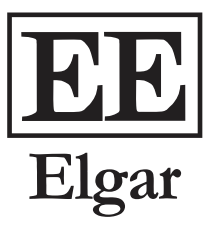
Honorary Professor Roderick J. Lawrence gives an insight to his new book.
The Handbook of Transdisciplinarity: Global Perspectives published on 12 May 2023 is a key reference about the globality of transdisciplinarity. The Handbook documents and promotes understandings of different interpretations of transdisciplinarity that coexist; it also illustrates this diversity using examples from many countries in all regions of the world. At the outset we underline that ‘global’ is interpreted as being much more than a synonym for international. It denotes a way of thinking that challenges segmentation, specialization, and partial visions, by inclusive and multidimensional visions that recognize diversity, complexity, and coexistence. That is why the word global is essential; it extends beyond international coverage to denote holism and provide a set of contributions that accept plural interpretations, meanings, perceptions, purposes, values, and worldviews that coexist.
The Handbook includes an Introduction and 35 chapters that present global perspectives about transdisciplinarity, and it fills a gap in the literature on this vast subject. It includes cases having intersections between diverse fields – for example, fine arts and natural sciences, digital technology and life sciences, health and urban planning – and this is deemed pertinent for at least two fundamental reasons. First, today transdisciplinarity is transcultural; there is a need to connect and communicate between those who adhere to transdisciplinarity in different cultures, who publish in diverse languages, and work in various domains. However, until now an Anglo-Germanic perspective has dominated contributions (Lawrence, 2015). In contrast, the authors of 35 chapters in this Handbook have residence in Austria, Australia, Belgium, Canada, Colombia, Ecuador, England, Ethiopia, Finland, France, Germany, Georgia, Guatamala, India, Ireland, Ivory Coast, Japan, the Netherlands, Nigeria, Norway, Portugal, Somalia, South Africa, Sweden, Switzerland, Taiwan, and USA.
Second, transdisciplinarity should not be limited to research, notably scientific research, because since the 1970s it has been associated with education and teaching and these deserve more attention than in the recent past. Moreover, transdisciplinary projects are increasingly associated with community-led initiatives beyond academic institutions, including citizen science, and projects that are meant to understand collectively and respond effectively to complex situations and persistent problems (Lawrence, 2021). Consequently, transdisciplinarity incorporates diverse types of knowledge and ways of knowing that ought to be considered. In all these respects, this Handbook is different from that by Hirsch Hadorn et al. (2008) Handbook of Transdisciplinary Research, and it reflects advances in transdisciplinarity in the last two decades.
In Part 1 of the Handbook of Transdisciplinarity: Global Perspectives, the authors of 7 chapters consider epistemologies, philosophies, and theories that facilitate and promote understanding of extant plural interpretations of transdisciplinarity in many domains. Part 2 includes 7 chapters that discuss and illustrate different ways that transdisciplinary contributions have been formulated and implemented in research and practice that are intended to improve understanding before implementing changes to societal conditions, specific situations, or problems. Part 3 contains 4 chapters that discuss pedagogy, education, and training led by institutions of higher education. Part 4 includes 10 chapters that present a global sample of transdisciplinary projects from all regions of the world that can serve as beacons for more innovative contributions. Part 5 has 4 chapters that discuss necessary financial, informational, and institutional resources required for advancing transdisciplinarity in a world of teaching, research, and professional practice dominated by disciplinary confinement. In Part 6, 3 chapters present the prospects of transdisciplinarity by authors in fields of human ecology and community development projects, biotechnology in life sciences, and nuclear research and development. These chapters are complemented by a Foreword by Alfonso Montuori and an Epilogue by the late Julie Thompson Klein.

Handbook of Transdisciplinarity: Global Perspectives
Roderick J. Lawrence is Honorary Professor at the University of Geneva, Switzerland. He was a member of the Scientific Advisory Board for Interdisciplinary and Transdisciplinary Research at the Swiss Academies of Arts and Sciences from 2009 to 2020. He has been a Member of the New York Academy of Sciences since 1997. ORCID: 0000-0002-1432-7245.
Read the introduction on Elgaronline here.
Further readings
Hirsch Hadorn, G., Hoffman-Riem, H., Biber-Klem, S., Grossenbacher-Mansuy, W., Joye, D., Pohl, C., Weismann, C. & Zemp, E. (eds.), Handbook of transdisciplinary research. Springer, 2008.
Lawrence, RJ. (ed.), Handbook of Transdisciplinarity: Global Perspectives. Edward Elgar, 2023. https://www.e-elgar.com/shop/gbp/handbook-of-transdisciplinarity-global-perspectives-9781802207828.html
Lawrence, R.J. (2021). Creating Built Environments: Bridging knowledge and practice divides. Routledge, 2021. https://www.routledge.com/Creating-Built-Environments-Bridging-Knowledge-and-Practice-Divides/Lawrence/p/book/9780815385394
Lawrence, R.J. Advances in transdisciplinarity: epistemologies, methodologies and processes. Futures, 65(1), 2015: 1-9. https://doi.org/10.1016/j.futures.2014.11.007

Leave a Reply